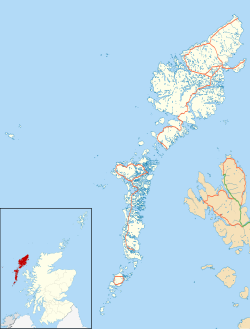Draft:Callanish VI
 | Draft article not currently submitted for review.
This is a draft Articles for creation (AfC) submission. It is not currently pending review. While there are no deadlines, abandoned drafts may be deleted after six months. To edit the draft click on the "Edit" tab at the top of the window. To be accepted, a draft should:
It is strongly discouraged to write about yourself, your business or employer. If you do so, you must declare it. Where to get help
How to improve a draft
You can also browse Wikipedia:Featured articles and Wikipedia:Good articles to find examples of Wikipedia's best writing on topics similar to your proposed article. Improving your odds of a speedy review To improve your odds of a faster review, tag your draft with relevant WikiProject tags using the button below. This will let reviewers know a new draft has been submitted in their area of interest. For instance, if you wrote about a female astronomer, you would want to add the Biography, Astronomy, and Women scientists tags. Editor resources
Last edited by Scope creep (talk | contribs) 57 days ago. (Update) |
Cùl a' Chleit | |
 Shorter stone of Callanish VI | |
| Location | Lewis |
|---|---|
| Coordinates | 58°10′31″N 6°41′07″W / 58.175373°N 6.685151°W |
| Type | Standing stones |
| History | |
| Periods | Neolithic, Bronze Age |
Callanish VI ("Cùl a' Chleit") is a pair of standing stones near the summit of Cùl a' Chleit—a small rocky hill on the Isle of Lewis. It one of many megalithic structures around the more well-known and larger Calanais I on the west coast of Lewis, in the Western Isles of the Outer Hebrides, Scotland.
Description
[edit]The larger stone measures 1.7 metres in height, while the other, which stands 17 metres to the southwest, is 0.9 metres tall.[1] Some 6 metres west-northwest of the taller stone is a flat slab 1.6 metres long, with another prostrate stone, 1.5 metres long, lying immediately to the south of it.[1]
A field surveyor who visited the site in 1914 suggested that the standing stones were the remains of a stone circle, but this conjecture remains unproven.[1]
References
[edit]- ^ a b c Historic Environment Scotland. "Lewis, Cul A'chleit (4173)". Canmore. Retrieved 11 September 2024.

